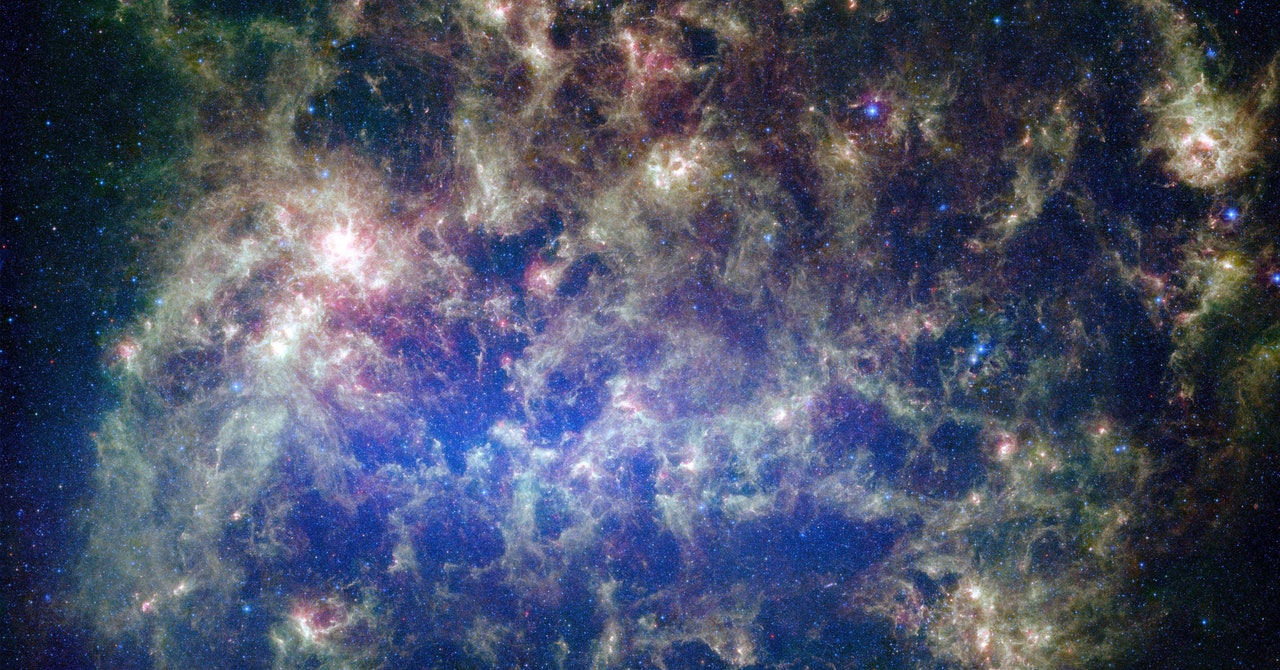.jpg)
Astronomers have naturally focused their telescopes on the part of the universe closest to us, since those stars and galaxies can be examined in the greatest detail. But astrophysicists have sometimes struggled to square the population of our own galactic neighborhood with dark-matter theories. For example, earlier models predicted more neighboring galaxies than have actually been spotted in the real universe, an issue dubbed the “missing satellites” problem.
Big clumps of dark matter should have enough gravitational pull to bring in the gas that builds up into stars and, later, galaxies. But another problem is that some simulations end up producing big, orbiting dark matter clumps, which look like the ones that should host satellite galaxies—but they don’t seem to have any real-universe counterparts. This is called the “too-big-to-fail” problem, since huge blobs of dark matter are thought to be too massive to fail to form galaxies within them.
A third challenge comes from the fact that the satellite galaxies swirling around the Milky Way and Andromeda seem to be orbiting in a plane, rather than spread out all around—something dark-matter physicists hadn’t predicted.
There are also cosmological problems that Frenk and his colleagues want to address. Astronomers using nearby supernova explosions and other local phenomena to measure how fast the universe is currently expanding get different answers than those probing the early universe. If dark-matter models are right, there has to be a way to resolve the troubling and persistent discrepancy between past and current observations.
But simulations like SIBELIUS might help. It might turn out that where a galaxy lives on the cosmic web of dark matter really does make a difference for measurements of the universe’s expansion rate. What if the Milky Way lies sort of in a “hole” in the web—if it’s more like a rural area between dark matter metropolises? If our part of the universe isn’t actually representative, then our local measurements of how fast the universe is blowing outward might be a little biased.
The Milky Way might happen to be situated in a fairly dense region of dark matter or in a sparse one, says Priyamvada Natarajan, a Yale University astrophysicist and dark-matter expert. “What is cool about this simulation is that they can address: How typical or unusual is our local volume? How rare is the distribution of matter that we see around us? Are we on a mountain or are we in a valley?” she says.
When comparing galaxies observed with telescopes to what’s seen in simulations, it’s necessary to compare apples to apples, says Jenny Sorce, an astrophysicist at the Institut d’Astrophysique Spatiale in Orsay, France, who helped design a similar kind of simulation, called CLONE, focused on galaxies in the Virgo cluster. “It’s not like you can compare one type of cluster with another one if they don’t share the same history or the same environment,” she says.
Frenk and his team did plenty of initial tests with their own computers at low resolution. But time on supercomputers, like on telescopes, is limited. They only had a single chance to run their full simulation, which took millions of hours of computing time on thousands of computer cores. But based on their simulation’s results, they find that the Milky Way’s neighborhood indeed seems atypical: We live in a cosmic region with fewer than average galaxies, but there are also more big galaxy clusters than on average. It’s like living in a low-elevation city, like Los Angeles, that nonetheless has mountain ranges in the distance.
If the Milky Way is indeed an oddball, it might help explain some dark matter mysteries, Frenk and Boylan-Kolchin speculate. If we’re in a sparse part of the universe, that might explain why local measurements of the expansion rate are different than one would expect based on measurements of the faraway universe.
And if our galaxy is in the middle of an atypical neighborhood, that might explain why the satellites are in an unusual configuration—maybe they were pulled into the Milky Way’s orbit in a particular way.
In other words, if the Milky Way’s neighborhood is indeed unusual, it means the cold dark-matter theory will survive these challenges—for now.
